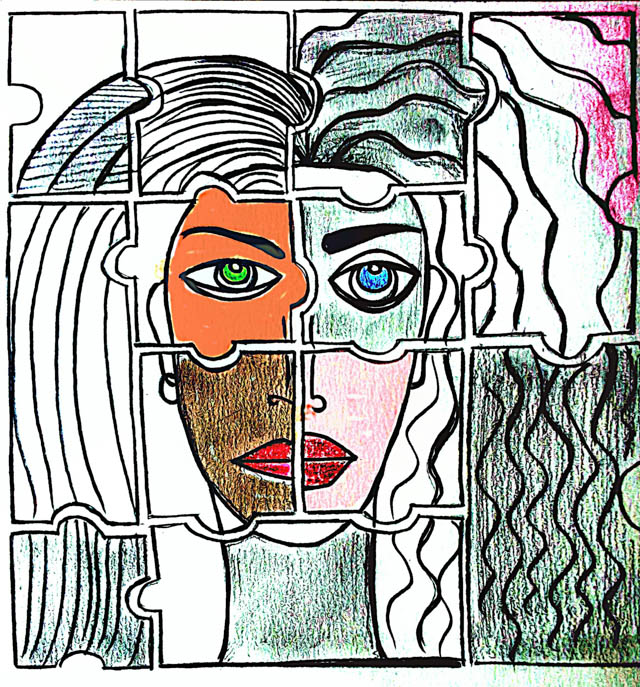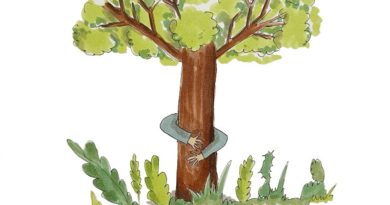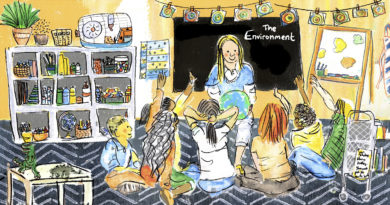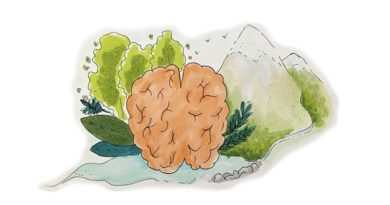“Who Am I?”: Handling Kids’ Challenging Questions

“Who am I, Mama?” When my son, who had joined kindergarten just a few months before, asked me this question, I was perplexed. Such a profound question at the tender age of five, I thought. I asked him what he meant. “Mama, am I an echt Inder?” Interesting – not the question, but the fact that I had no idea what he meant by echt, the German word for “real.” He explained, “Are you and Papa both real Indians? Did you go to school on elephants?”
“Yes, we are both Indians and no, we went to school with the school bus,” I replied. He seemed to be in a contemplative mood.
Get to the cause
I knew there was more going on in his head. I am not a mother who sweeps issues under the carpet. I encourage my children to talk to me, voice their opinions and concerns, and I give them the answers they need in a way they understand best. So I pursued my line of questioning to find out more:
“Why do you ask?” He answered, “We were learning about Elmer the elephant. Do you know elephants live in India and Africa? My teacher told the class that I was an Indian and asked me if I’d seen a real elephant on the road. I said no. And then someone said I was not a real Indian because I am not black enough, and I speak English.” “Hmm….” I murmured, and then he continued, “But mama, you are not so black. My teacher asked if I was “echt Inder.”
With that, my son busied himself playing with his little sister.
That evening before dinner, he told my husband to “become blond.” That way, he could be Swiss. My husband looked at me, puzzled. So, I put off fixing dinner till later and sat with my five-year-old.
*Don’t brush concerns – however small – under the carpet.
Simple straight talking
Although my son was not worried (or being bullied), he needed answers. He also needed reassurance that he was not different and in no way less than anyone in class. I asked him if his friends were all the same color and had the same color hair. He replied in the negative. I asked him if they only spoke German or knew other languages. He answered in the affirmative. “But no one knows Hindi and English,” he added.
*Put things into perspective.
Highlight the positive
I told him he was special. He was tri-lingual, and knowing so many languages was a boon, since he could go on holidays or to study in different countries and communicate with ease. I added that since no one spoke Hindi, it was our little “secret language” – a rather cool thing to have! In addition, I told him that he already knew more than many others in his class who spoke only one language. His eyes lit up and he screamed, “Yippee!” and told his three-year-old sister, “We can play detectives and no one will understand us! And you can paint your hair golden.”
The color concept had to be dealt with now. “Why? You both have lovely black hair – thick and shiny. That makes you unique.” My son said he wanted to have the same hair as his friend Alan. “But it won’t match your skin,” I told him. “Have you seen a brown flower with a golden stem?” I drew one for him. He didn’t seem to like it much. I told him that the best color combinations are found in nature, but if he didn’t like his natural hair, he could color it after he turned 16. End of chapter.
*Don’t complicate matters unnecessarily.
Accepting differences
Providing concrete examples is the best way to help your child understand life in a simple way.
“Just like all mamas are not the same height, size and color, children are different, too. Otherwise, how would you know who belongs to whom? You want to be my son, not Marina’s child, right?” A big teddy-bear hug and a hard kiss on my cheek from my son said it all.
To further highlight the concept of differences, I held his hand and asked him if all five fingers were his. He nodded. I asked him how that could be possible, because the fingers were all different in size. “No – all mine. See, this is my hand,” he said. Like his fingers, people are different, too, I reiterated. But because they were fixed to one hand – they belonged to the owner of the hand. And similarly, because all these people lived in Switzerland, they were residents of this country. And so was he. He was born here. This was home – despite the fact that he was not “originally Swiss.”
*Acknowledge differences to make acceptance easier. Reiterate facts.
Dispel false notions
“But I want to go to school in India on an elephant!” (Help!)
“Nobody goes to school on elephants. Snake charmers do not line the roads. Yes, cows and dogs, cars and bikes share the same road – very congenially. And no, we don’t cook spicy Indian food everyday. Not here. Not in India. Just like the Swiss don’t eat only cheese and chocolate.”
Wherever you come from, educate your child about his roots and rid him of false notions.
*Educate correctly.
Teach pride in “the blend”
I reminded him of the time just before we went to the Raebelichtliumzug – the Swiss version of Halloween, in a small way. We had celebrated Diwali, where his mama had worn a sari and cooked Indian food for our friends who had come to our house for dinner. He nodded. “See, like we celebrate Diwali, we also celebrate Raebelichtli, Fasnacht, and Christmas. This way we have more to celebrate. More parties. More fun times!”
*Today’s world, as we know, is one beyond boundaries, really. Make your child a confident global citizen – comfortable in his own skin. Prepare him gently for questions. Equip him with the correct answers. Do it with confidence and fun!
By Aradhna Sethi
Aradhna Sethi is the former chief editor of Swiss News and has been a consulting editor for other English language publications. An aspiring author, she blogs and writes while balancing the demands of growing up kids and her entrepreneurial husband.
Read her on: aradhnasethi.wordpress.com. Follow her on Twitter: @AradhnaSethi.
Illustration by Sharanya Mageshwaran
Sharanya is a stay-at-home mom of a very naughty three-year-old who speaks better German than her mother does. Before moving to Zurich, Sharanya was a pharmaceutical research scientist in India. She loves painting and sketching with fauvist expressionist abstract themes. More of her artwork can be see here: http://somelightandcolor.blogspot.ch/




Hi Aradhna what a lovely article – great ideas about dealing with differences, very straightforward and clear solutions, truly inspiring, thanks 🙂
Karin
Pingback:“Who Am I?” | aradhnasethi